#duchenne
Text
Klinik Araştırmalar ve İlaç Geliştirme Süreci
#dmd aileleri#dmd türkiye#duchenne#dmd dayanışma#dmd aile rehberi#kas hastalıkları#dmd nedir#bmd#becker#dmd#ilaç#ilaç geliştirme#ilaç çalışmaları#clinical trials
38 notes
·
View notes
Text
Ordinary
I've found that, generally, people with disabilities that I have spoken with don't like being called brave, heroic, or inspirational for just living their everyday lives. Some of us don't like that our diagnosis forces us to take on obstacles that are unfair, difficult, and frustrating as a matter of course. Even when we go above and beyond, in areas such as advocacy and fighting for our own rights, some of us don't like being reminded that we don't have all the rights afforded to most individuals. Some of us don't want to be called "brave" for daring to speak up, when it shouldn't feel like it requires bravery to ask for fair treatment. Sometimes we don't want to be heroes. Sometimes we just want to feel ordinary.
3 notes
·
View notes
Text
When I Lost My Brother
On December 13, 1986, I reached the low point of my life.
I was the eldest and Mike was a year younger than me. Both of my younger brothers, Mike and Steve, were born with Duchenne Muscular Dystrophy. For a while, they both walked but their gait was unsteady and eventually the disease robbed them of their ability to stand.
Mike and Steve ended up in wheelchairs.
Since Mike and I were only a…
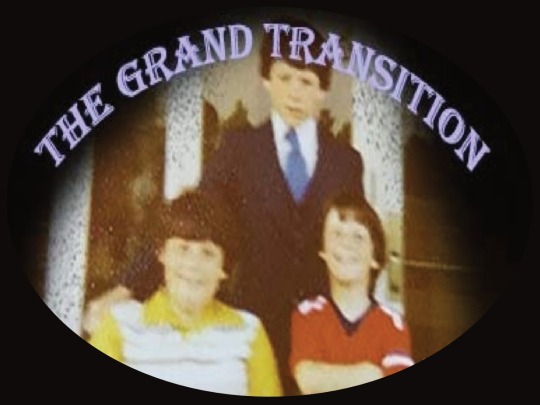
View On WordPress
#article#association#brother#death#disease#duchenne#grand#grand transition#jade ring#MD#muscular dystrophy#reader#the grand transition#transition#werner#wheelchair#wisconsin#writer#writing#WRWA
0 notes
Photo

Nuova luce per la cura della distrofia muscolare di Duchenne
Il microbiota intestinale e le sue relazioni con gli endocannabinoidi sono importanti attori nel contrastare i processi infiammatori e muscolo-degenerativi come quelli che caratterizzano la distrofia muscolare di Duchenne.
Lo dimostra uno studio di un team di ricercatori dell’Istituto di chimica biomolecolare del Consiglio nazionale delle ricerche (Cnr-Icb),
pubblicato sulla rivista EMBO Molecular Medicine.
https://www.fashionluxury.info/it/
0 notes
Text
Duchenne, un padecimiento “raro” que ataca solo a los varones
Duchenne, un padecimiento “raro” que ataca solo a los varones
Tijuana, 11 de septiembre de 2022.- En Baja California, uno de cada 3, 500 niños nacen con el Síndrome Duchenne, que es un tipo de distrofia muscular difícil de diagnosticar ya que a simple vista no es detectable, pero se diagnostica por que se presenta en menores que tienen dificultade para actividades simples como el brincar o levantarse.
Mónica Paredes, encargada de Relaciones Públicas de la…
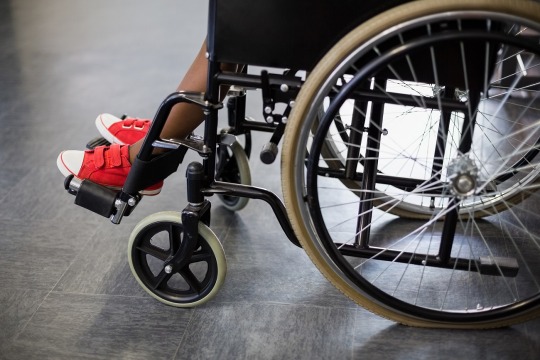
View On WordPress
0 notes
Text

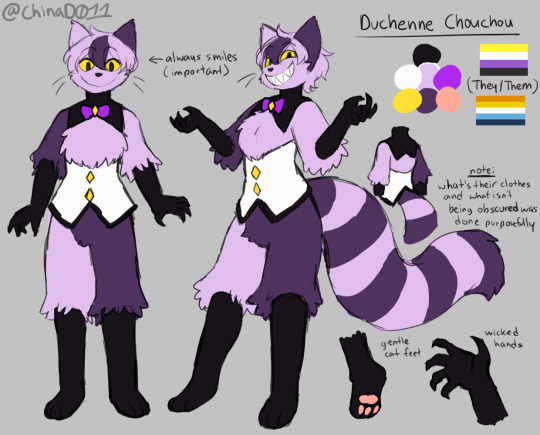
Duchenne Chouchou / Non-binary / ■■ / Demon
Known as “Demon of Illusions”, has the power to manipulate illusions. Always smiling, they are very playful and love messing with people, but hardly maliciously. Is gone and reappears however/whenever they like.
They are the one who found Ramiel as a baby. They grew attached to him, even going as far as to protect the Fae Forest for his sake. Ramiel is one of few who actually likes Duchenne, their relationship something like a mother and son.

2nd character for Twins Phantasia, this time it's a very powerful cheshire cat demon. i know alice in wonderland isn't technically a fairy tale, but the vibes are definitely there. i say why not include it in some form?
duchenne might be non-binary but i definately think they act more like a typical mother rather than a father to ramiel. i can imagine duchenne playing little tricks on ramiel all the time. it's okay though, ramiel would play along. not many other people may appreciate that unfortunately.
in my story White Clover Guild, there were twin goddesses that represented light and darkness respectively, which were the two constants in that world. light and darkness did not represent good and evil, but rather just opposites, two sides to the same coin, etc. i really liked that idea i guess because the two first characters i made for Twins Phantasia ended up being a representation of that light/darkness idea.
actually, the name "Twins Phantasia" is in reference to the twin goddesses from that story. they're in this too, but i won't be focusing on them all that much.
#duchenne chouchou#oc#furry#cheshire cat#nonbinary#anthro#furry cat#twins phantasia#eye strain warning#aromantic asexual
12 notes
·
View notes
Video
Gene Team
As an organism evolves, its DNA does too. Tracing the history of how it mutates, moves and duplicates can reveal surprises, like similar genes – paralogues – in distant corners of the genome. Here researchers use optical projection tomography to follow the activity of a gene called Utrn (highlighted in red) in a mouse embryo. Combining patterns of bioluminescence and fluorescence to reconstruct this 3D image reveals Utrn in many of the mouse’s early tissues. Utrn has a paralogue, Dmd, another important developmental gene found to be faulty in Duchenne muscular dystrophy in mice and humans. While these similar genes are expressed differently in health and disease, researchers believe it might be possible for Utrn to 'compensate' for Dmd in some patients. This mouse model will aid the next challenge – testing drugs to coax these related genes into working together.
Read more about this research from the Epigenetic Memory Group at the MRC London Institute of Medical Sciences here
Written by John Ankers
Video from work by Hannah J. Gleneadie and Beatriz Fernandez-Ruiz, and colleagues
Epigenetic Memory Group, MRC London Institute of Medical Sciences (LMS), Imperial College London, Du Cane Road, London, UK
Video originally published with a Creative Commons Attribution 4.0 International (CC BY 4.0)
Published in Communications Biology, March 2023
You can also follow BPoD on Instagram, Twitter and Facebook
#science#biomedicine#genes#muscular dystrophy#duchenne muscular dystrophy#dystrophin#optical tomography#mouse model#bioluminescence#fluorescence#3d imaging
13 notes
·
View notes
Text



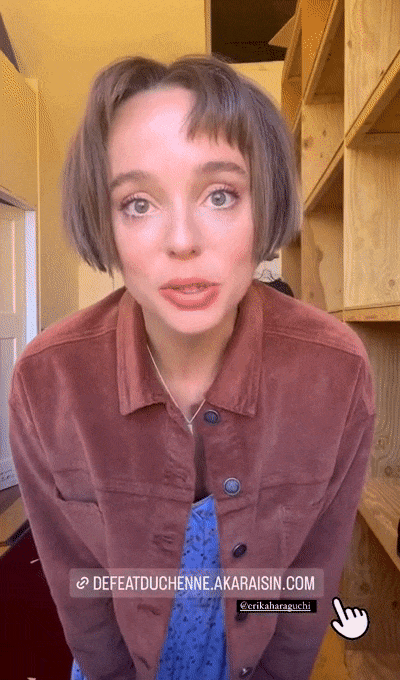

Em Haine
Hi, it's Em...
Defeat Duchenne!
7 notes
·
View notes
Text
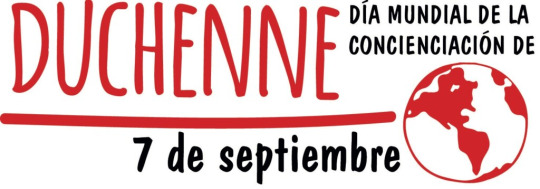
El 7 de septiembre se rinde homenaje a una enfermedad rara que ocasiona distrofia muscular. Se celebra el Día Mundial de Concienciación de Duchenne, con la finalidad de sensibilizar y concienciar a la población acerca de esta patología que afecta a 250.000 niños a nivel mundial, especialmente a varones.
youtube
La escogencia de la fecha de esta efeméride (7/9) obedece a que el gen que ocasiona esta enfermedad contiene 79 exones, haciendo una analogía con la fecha (el día y el mes).
¿Qué es la Distrofia Muscular de Duchenne (DMD)?
La Distrofia Muscular de Duchenne (DMD) es una enfermedad rara descrita en el año 1861 por Duchenne de Boulogne, caracterizada por una degradación muscular progresiva ocasionada por una duplicación o modificación del ADN, afectando el gen DMD que contiene 79 exones o fragmentos que codifican la proteína denominada distrofina.
Generalmente se manifiesta en los niños varones, las niñas pueden ser portadoras, siendo moderadamente afectadas por la enfermedad.
La ausencia o disminución de esta proteína deteriora las células musculares, incidiendo notablemente en la función muscular y cerebral, causando las siguientes dificultades de aprendizaje:
Trastorno por déficit de atención (ADD).
Trastorno obsesivo-compulsivo (OCD).
Autismo.
Síntomas y tratamiento de esta enfermedad
Los principales síntomas de la Distrofia Muscular de Duchenne (DMD) son los siguientes:
Debilidad de la cintura pélvica en la etapa de la infancia (a partir de los 2 ó 3 años de edad).
Torso hacia atrás.
Pérdida de la marcha entre los 10 y los 13 años, agravando la afectación muscular incluyendo el músculo cardíaco. A partir de la adolescencia, suelen requerir asistencia respiratoria.
Pérdida progresiva de la capacidad de caminar, dificultad para levantarse o correr.
Deterioro de la capacidad respiratoria y el músculo cardíaco.
En la actualidad no existe una cura para esta enfermedad, requiriendo la aplicación de sesiones de fisioterapia y tratamiento médico con corticoesteroides, para el control de los síntomas y mejoramiento de la calidad de vida del paciente.
Campaña año 2021: Vida Adulta y Duchenne
Anualmente se elige un tema central para la celebración de esta efeméride. Para el año 2021 el lema es "Vida Adulta y Duchenne".
Debido a que en años recientes se ha incrementado la esperanza de vida para las personas afectadas por esta patología, con esta campaña se pretende exaltar los desafíos y oportunidades frente a esta enfermedad, especialmente en la vida adulta.
La Organización Mundial de Duchenne (World Duchenne Organization) ofrecerá el día 7 de septiembre de 2021 un evento en línea, en el que reunirá a expertos para que compartan sus experiencias acerca de esta enfermedad rara. Asimismo, capacitar a los adultos jóvenes que padecen esta enfermedad y a sus familiares.
Dicha Organización surgió como una colaboración a nivel mundial, entre asociaciones de padres de pacientes con Duchenne, para mejorar la calidad de vida a los pacientes afectados por esta patología.
Comparte información útil e interesante en las redes sociales acerca del Día Mundial de Concienciación de Duchenne, utilizando los hashtags #WorldDuchenneDay #WDAD2021

2 notes
·
View notes
Text
COMMITMENT TO THE BIT (POTENTIALLY GETTING IN CONTACT WITH PHYSICAL THERAPISTS WHO HAVE WORKED WITH PATIENTS WITH DUCHENNE MUSCULAR DYSTROPHY)
#just thinking thoughts...#MAYBE!!! MAYBE!!!!#SOMEONE IN THE CHORUS HEALTH COMMITTEE OFFERED ? ?#I didn't know his parents were physical therapists!!#the more you know...#on the off chance. anyone here have wisdom regarding duchenne muscular dystrophy?#more data is better. obviously.
12 notes
·
View notes
Text
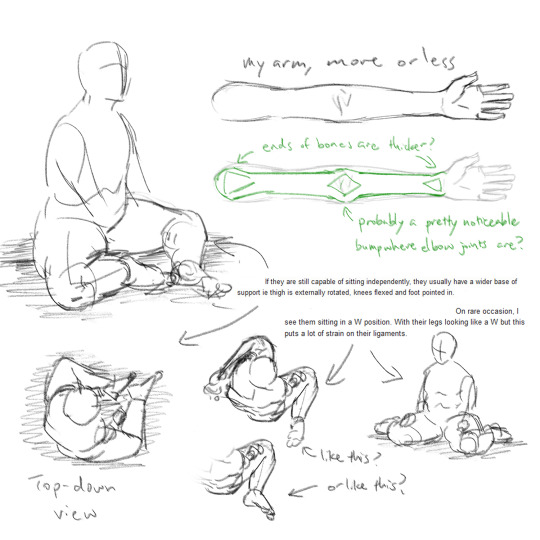

One of the characters in my upcoming work has Duchenne muscular dystrophy and I’ve been in touch with a physical therapist to learn more about it. These are some of my attempts to visualize what they told me about the anatomy and postures of their patients. Hopefully I can get some feedback from them on how to improve my depictions...
16 notes
·
View notes
Text
#dmd aileleri#dmd türkiye#duchenne#dmd dayanışma#dmd#dmd nedir#dmd aile rehberi#kas hastalıkları#bmd#becker#crispr#crispr cas9#gen düzenleme#dmd gen düzenlemesi
22 notes
·
View notes
Text
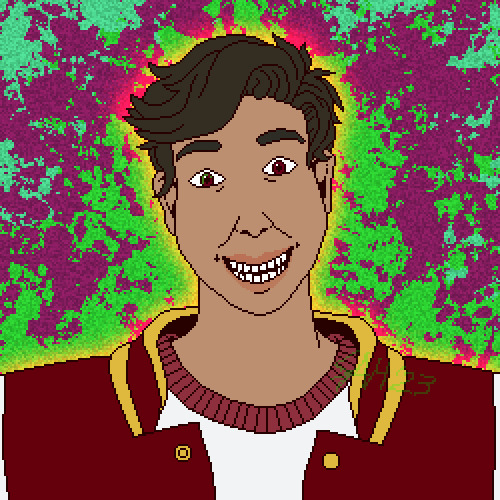
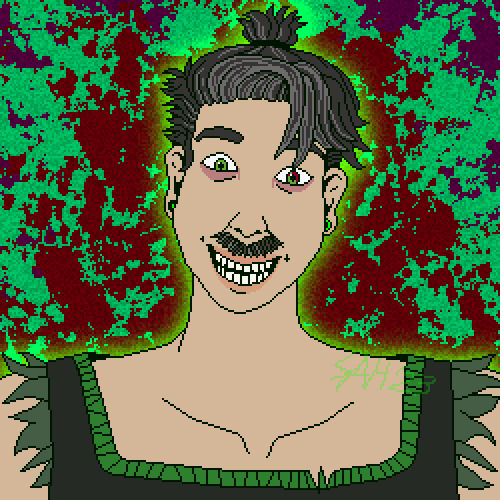
HHHHh- I pulled an allnighter but I knew I had to do up the Begotten!Twins simultaneously. Because, again, Creepy Twins™. :,D
But I had fun here. This lil horror AU is very Creativitwin-centric.
#pixel art#pixel spill#sanders sides#roman sanders#remus sanders#begotten au#scopophobia/#teeth/#non-duchenne smiles#(and now/next... after a snooze maybe... writing more for this au is ahead)
6 notes
·
View notes
Photo
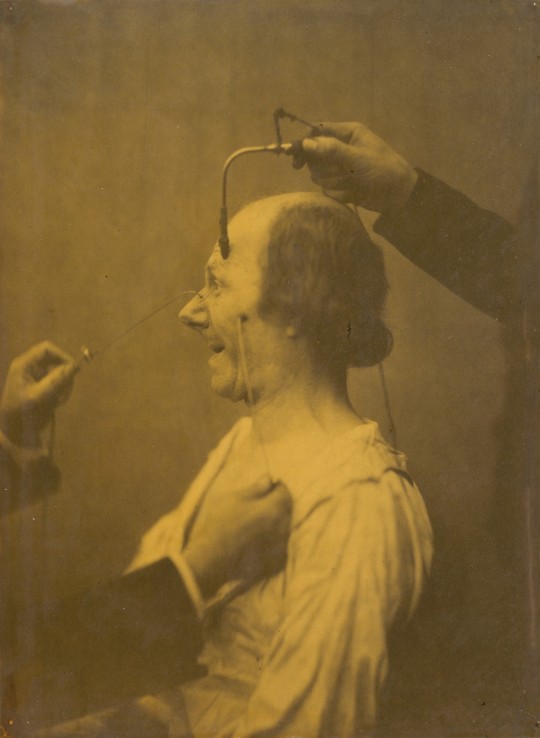
The attention attracted by an object that provokes lascivious ideas and desires, 1854-1856
Guillaume-Benjamin-Amant Duchenne (de Boulogne) (artist) French, 1806 - 1875
10 notes
·
View notes
Text
There are multiple risk factors for the development of osteoporosis. These include but are not limited to advanced age, cigarette smoking, chronic glucocorticoid therapy, low body weight, previous fractures, history of rheumatoid arthritis, and excessive alcohol intake.
Antiepileptic drugs (AEDs) are associated with adverse effects on bone health. The AEDs most commonly associated with altered bone metabolism are those that induce the cytochrome P450 enzyme system. Specifically, the AED phenytoin has a direct inhibitory effect on intestinal calcium absorption and can stimulate osteoclastic bone resorption.
A score of less than -2.5 on DEXA scanning would indicate osteoporosis, a score of -1.0 to -2.5 would indicate osteopenia, and a score greater than -1.0 indicates normal bone density. Additionally, a fragility fracture (fracture from minor trauma such as a fall from a standing height or less) is diagnostic of osteoporosis without any further workup.
Bottom Line: The risk factors for osteoporosis include advanced age, cigarette smoking, chronic glucocorticoid therapy, physical inactivity, poor intake of calcium and vitamin D, body weight less than 127 lb, previous fractures, anticonvulsant use, hyperthyroidism, celiac disease, rheumatoid arthritis, and excessive alcohol intake.
The characteristic need for the child to use his hands to push himself to an upright position when arising from the floor is the Gower sign. It results from weakness in the proximal lower extremity muscles. Physical examination reveals pseudohypertrophy of the calf, lumbar lordosis, a waddling gait, shortening of the Achilles tendons, hypotonia, and hyporeflexia or areflexia. Patients usually use wheelchairs by age 12 or 13. Additional complications include delayed growth, dilated cardiomyopathy, increased fractures, progressive scoliosis with impaired pulmonary function, cognitive impairment, and eventual respiratory insufficiency.
Bottom Line: Elevated laboratory markers in the setting of Duchenne muscular dystrophy include serum creatine kinase, aspartate aminotransferase, and alanine transaminase.
COMBANK Insight: DMD is a progressive, myopathic disorder inherited in an X-linked, recessive fashion and caused by a defective gene on the X chromosome responsible for dystrophin production. Dystrophin normally serves to stabilize and prevent the breakdown of muscle fibers. Loss of dystrophin thus leads to muscle fiber degeneration, resulting in muscle weakness.
Wilson Disease, also known as hepatolenticular degeneration, is an autosomal recessive defect involving an ATPase, Cu2+ -transporting, β-polypeptide. In this disease state, copper is deposited in tissues of the brain, liver, kidneys, and Descemet membrane of the cornea (known as Kayser-Fleischer rings, which are seen in the exhibit). Parkinsonian-like tremor and dementia may be evident when the nervous system is affected. Renal tubular damage occurs in the kidneys and cirrhosis can develop in the liver. Diagnosis can be made with the observation of decreased serum ceruloplasmin. Treatment includes penicillamine, which creates a soluble complex with the metal that can be excreted through the urine.
Bottom Line: A Kayser-Fleischer ring is a golden brown ring observed in the Descemet layer of the cornea as a result of copper deposition and is seen in Wilson disease. Labs reveal low serum ceruloplasmin and treatment with penicillamine can stop the progression of this degenerative disease state.
The types of cancers that metastasize to the bone most commonly are lung, breast, thyroid, renal, and prostate. Multiple myeloma and lymphoma can both form lytic lesions from their origins within the marrow.
A SPEP and UPEP are sensitive for multiple myeloma and should be obtained along with a measurement of the patient's total protein and globulin levels.
Bottom Line: The initial workup of a new lytic lesion generally involves a CT chest/abdomen/pelvis, SPEP/UPEP, bone scan, basic labs, and mammogram or PSA
#osteoporosis#Duchenne muscular dystrophy#muscular dystrophy#Wilsons disease#multiple myeloma#cancer
3 notes
·
View notes
Text
DYNE-251 for the treatment of Duchenne Muscular Dystrophy Received FDA Fast Track Designation
HK-Magicure -- On October 31, Dyne Therapeutics announced that the U.S. FDA has granted Fast Track designation for DYNE-251 for the treatment of Duchenne muscular dystrophy (DMD) mutations amenable to exon 51 skipping. DYNE-251 is being evaluated in the Phase 1/2 DELIVER global clinical trial.

DYNE-251 is Dyne’s product candidate being developed for people living with Duchenne muscular dystrophy (DMD) who are amenable to exon 51 skipping. DYNE-251 consists of a phosphorodiamidate morpholino oligomer (PMO) conjugated to a fragment antibody (Fab) that binds to the transferrin receptor 1 (TfR1) which is highly expressed on muscle. It is designed to enable targeted muscle tissue delivery and promote exon skipping in the nucleus, allowing muscle cells to create a truncated, functional dystrophin protein, with the goal of stopping or reversing disease progression.
In preclinical studies, robust and durable exon skipping and dystrophin expression were observed in the mdx mouse model in skeletal and cardiac muscle as well as reduced muscle damage and increased muscle function. In non-human primates, DYNE-251 demonstrated a favorable safety profile.
DELIVER is a Phase 1/2 global clinical trial evaluating DYNE-251, consisting of a 24-week multiple ascending dose (MAD) randomized placebo-controlled period, a 24-week open-label extension and a 96-week long-term extension. The trial, which is designed to be registrational, is expected to enroll approximately 46 ambulant and non-ambulant males with DMD who are ages 4 to 16 and have mutations amenable to exon 51 skipping therapy. The primary endpoints are safety, tolerability and change from baseline in dystrophin levels as measured by Western blot. Secondary endpoints include measures of muscle function, exon skipping and pharmacokinetics. Dyne anticipates reporting data from the MAD placebo-controlled portion of the DELIVER trial on safety, tolerability and dystrophin in the second half of 2023.

About Duchenne Muscular Dystrophy (DMD)
Duchenne Muscular Dystrophy (DMD) is a rare disease caused by mutations in the gene that encodes for dystrophin, a protein critical for the normal function of muscle cells. These mutations, the majority of which are deletions, result in the lack of dystrophin protein and progressive loss of muscle function.
DMD occurs primarily in males and affects an estimated 12,000 to 15,000 individuals in the U.S. and 25,000 in Europe. Loss of strength and function typically first appears in pre-school age boys and worsens as they age. As the disease progresses, the severity of damage to skeletal and cardiac muscle often results in patients experiencing total loss of ambulation by their early teenage years and includes worsening cardiac and respiratory symptoms and loss of upper body function by the later teens. There is no cure for DMD and currently approved therapies provide limited benefit.
For more articles on medicines, click here: hkmagicure
Hong Kong Magicure Medical Center has long been focusing on the import and export of new drugs, special drugs and rare disease drugs in the field of oncology. Welcome to inquiry: [email protected].
3 notes
·
View notes